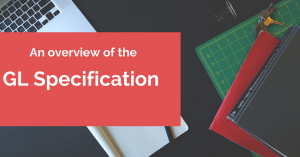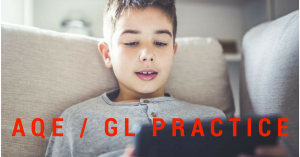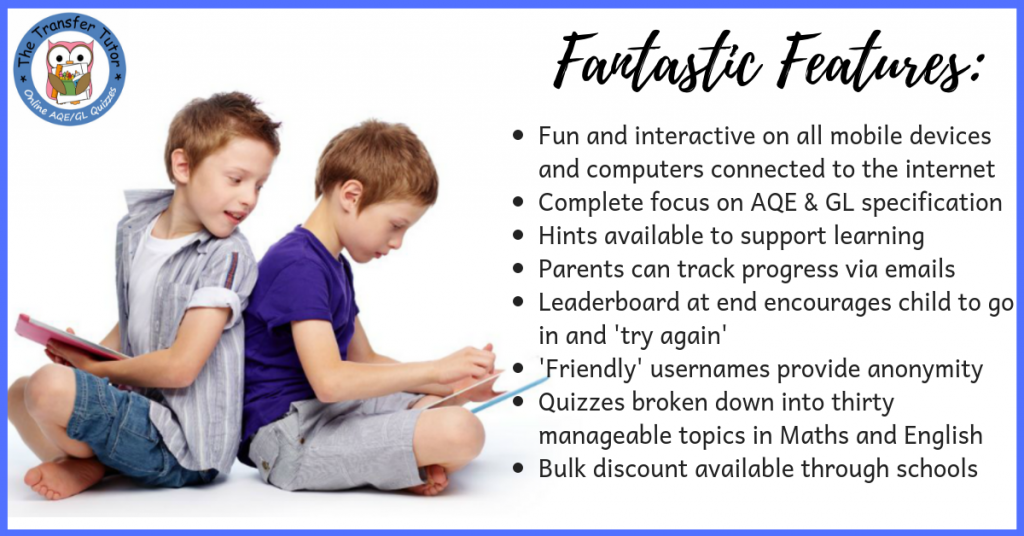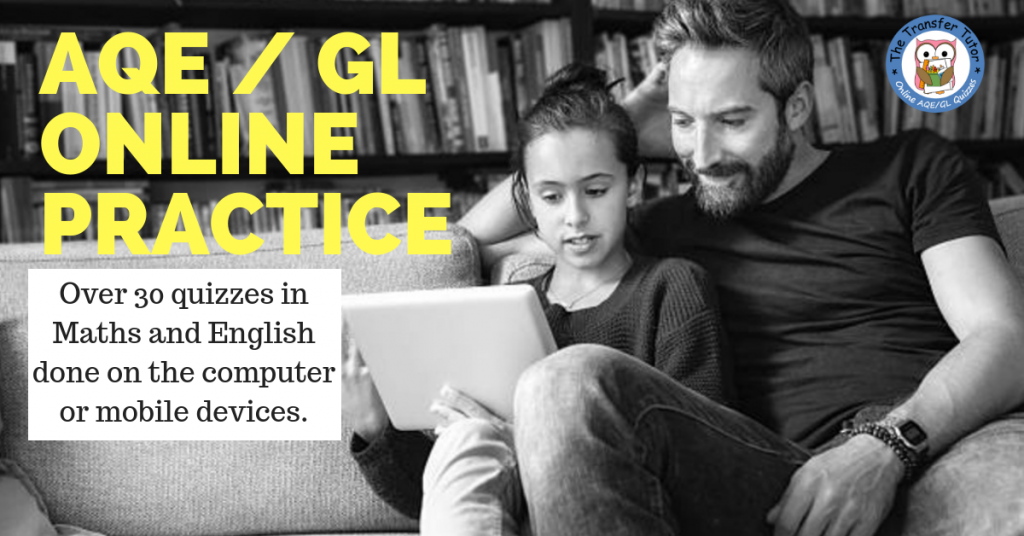
The following information is taken from the PPTC (Post Primary Transfer Consortium) and gives details on the assessment content of the GL examination.
PRACTICE ASSESSMENT (BEFORE MAIN TEST)
Each assessment paper begins with a Practice Assessment which is followed by the Main Entrance Assessment.
The Practice Assessment is intended to provide pupils with an opportunity to familiarise themselves with the style of questions in the Main Assessment, and to become accustomed to the multiple-choice method of responding and the use of a separate answer sheet.
The Practice Assessment contains both familiarisation questions and practice questions. The familiarisation questions are worked through with the pupils and the correct answers are provided with explanations of those correct answers given by the Assessment Invigilator. They also provide an exercise in the use of a separate answer sheet where pupils are required to mark their intended answer.
The practice questions allow the pupils some time to work independently through some questions in preparation for starting the Main Assessment. Answers are provided for these practice questions prior to the start of the Main Assessment.
ENGLISH
WARM UP (PRACTICE) EXERCISE
The English assessment paper begins with a Practice Assessment comprising of a short reading passage with 3 familiarisation questions (comprehension) and 7 practice questions (4 spelling and 3 punctuation) which takes about 20 minutes to complete.
None of these 10 questions count toward the overall mark.
MAIN ASSESSMENT (FORMAT)
The Main Assessment then begins and requires the pupils to work through 50 questions in 50 minutes.
There are two reading passages.
For 2021-22 one of these reading passages will be fiction or non-fiction and the other will be poetry (all from 20th century onwards). Both reading passages are followed by 16 comprehension questions.
Each comprehension question has A, B, C, D or E answer options. There are also 9 punctuation questions and 9 spelling questions which, in addition to A, B, C, D all have a valid answer option of “N” meaning that there was no mistake or error.
Overall, 64% of the marks are for the comprehension questions which follow the reading passages and 36% of the marks are for the spelling and punctuation questions.
Comprehension passages are presented in evenly spaced 12pt text. They may be accompanied with images to illustrate the text.
ENGLISH ASSESSMENT CONTENT
The content of the English assessment paper is intended to reflect aspects of English language involving comprehension, vocabulary, punctuation, spelling and study skills.
The assessment booklets have been designed as simulations of the usual book layout; title and contents pages at the front, index, and glossary at the back. The passages chosen have been selected to represent a variety of styles and authorship and the types of passage a child might come across in the normal course of reading in school or at home. The content of the passages is suited in difficulty and interest to children in the age group being assessed.
One of the reading passage will be fiction or non-fiction and the other reading passage will be poetry but none of the passages will be from texts written before the 20th century.
The overall length of the reading material has been reduced by around 30% – 40% compared to previous Entrance Assessment papers which had three reading sections; i.e. reducing the number of reading passages has not meant increasing the length of the passages.
Comprehension is considered to be of considerable importance and this is reflected in the structure of the assessment paper. Other skills occupy a smaller proportion of the assessment questions. The questions which follow each reading passage are phrased in language which is simpler in structure and vocabulary than the reading passages.
The spelling and punctuation exercises use short passages of dialogue taken from pupils’ literature.
The assessment includes the following:
- Comprehension: literal and inferential interpretation of statements in the passages.
- Vocabulary: meanings of selected words in the context of the passage.
- Spelling and Punctuation: proofreading skills in detecting mistakes in printed material.
Sample English & Answers
In 2021 GL have provided a sample familiarisation booklet to give you a flavour of what to expect in the English section and a sample answer sheet. This year is similar to 2021 so these can be viewed below and will help you understand what will be expected during the test.

MATHEMATICS
WARM UP (PRACTICE) EXERCISE
Before the main maths test, there will be a warm up exercise of 3 familiarisation questions and 6 practice questions.
The 3 familiarisation questions are worked through with the pupils and then they are provided with a further 10 minutes to complete the remaining 6 practice questions.
None of these 9 questions count toward the overall mark.
MAIN ASSESSMENT
The Main Assessment then begins and requires the pupils to work through 45 questions in 45 minutes. Each Mathematics question has A, B, C, D or E answer options.
Maths Topics NOT Being Tested in 2022
- Proportion will not be examined.
- Ratio, including scale will not be examined.
- There will be no algebra questions.
- There will be no questions involving use of brackets.
- Pie charts will not be used in questions.
- Probability and likelihood will not be examined.
- There will be no questions on cube numbers.
- There will be no questions involving negative numbers.
- Averages will be limited to mean i.e. there will be no questions on mode or median.
- Calculation of perimeter and area are included but calculation of the volume of cubes and cuboids is not.
- Questions may be asked on 2D shapes but not on 3D shapes.
- Metric units for length, mass and volume will be limited to cm, m, km (length), g, kg (mass) and ml, l (volume).
- Although questions may be asked on 12 and 24-hour clocks there will not be any questions which use timetables.
Maths Specification (from NI Curriculum)
GL state that:
The content of the Entrance Assessment Mathematics paper is guided by the CCEA specification in the Mathematics and Numeracy Area of Learning section of the Northern Ireland Key Stage 1 and 2 Curriculum.
The questions will address the content detailed in the Programme of Study strands:
* Numeracy
* Measures
* Shape and Space
* Handling Data
The NI Curriculum PDF is a 149 page document so here’s the key information / sections you need to consider for the maths test.
NUMBER
Understanding Number and Number Notation
Pupils should be enabled to:
• count, read, write and order whole numbers;
• develop an understanding of place value to include up to two decimal places, use this to multiply and divide numbers by 10 and 100;
• estimate and approximate to gain an indication of the size of a solution to a calculation or problem;
• understand and use vulgar fractions, decimal fractions and percentages and explore
the relationships between them;
• understand and use negative numbers in context.
Patterns, Relationships and Sequences in Number
Pupils should be enabled to:
• explore and predict patterns and sequences of whole numbers, follow and devise rules for generating sequences;
• understand and use multiples and factors and the terms prime, square and cube, appreciate inverse operations;
• interpret, generalise and use simple relationships expressed in numerical, spatial and practical situations, understand and use simple function machines;
• understand that a letter can stand for an unknown number.
Operations and their Applications
Pupils should be enabled to:
• develop strategies to add and subtract mentally;
• know the multiplication facts up to 10 x 10;
• engage in a range of activities to develop understanding of the four operations of number, appreciate the use of brackets, add and subtract with up to two decimal places, multiply and divide decimals by whole numbers, use these operations to solve problems.
Money
Pupils should be enabled to:
• use the four operations to solve problems involving money;
• discuss the value of money, how to keep money safe, ways in which goods can be
paid for and the need for budgeting;
• be able to plan and think ahead in terms of saving and spending money, prioritise
spending with a limited supply of money, understand how to access best buys;
• discuss foreign currency including the Euro.
MEASURES
Pupils should be enabled to:
• develop skills in estimation of length, weight, volume/capacity, time, area and temperature;
• appreciate important ideas about measurement including the continuous nature of measurement and the need for appropriate accuracy;
• understand the relationship between units and convert one metric unit to another, use the four operations to solve problems;
• calculate perimeter and the areas and volumes of simple shapes;
• understand and use scale in the context of simple maps and drawings;
• recognise times on the analogue and digital clocks and understand the relationship between the 12 and 24-hour clocks, use timetables.
SHAPE & SPACE
Exploration Of Space
Pupils should be enabled to:
• construct a range of regular and irregular 2-D shapes, classify these through examination of angles and sides, recognise line and rotational symmetry, reflect shapes in a line, explore tessellations, name and describe common 2-D shapes, begin to understand congruence in 2-D shapes;
• construct 3-D shapes, investigate the number of faces, edges and vertices on these shapes, name and describe common 3-D shapes, explore the relationship between 2-D and 3-D shapes.
Position, Movement and Direction
Pupils should be enabled to:
• understand the notion of angle in the context of turning, recognise right angles, understand clockwise and anti-clockwise, know the eight points of the compass, use Logo to understand movement and turning, be introduced to a programming language and use it to create pictures and patterns and to generate shapes;
• develop language associated with line and angle, recognise properties of acute, obtuse and reflex angles, investigate angles in triangles and quadrilaterals, measure and draw angles up to 360°;
• use co-ordinates to plot and draw shapes in the first quadrant.
HANDLING DATA
Collecting, Representing and Interpreting Data
Pupils should be enabled to:
• collect, classify, record and present data drawn from a range of meaningful situations, using graphs, tables, diagrams and ICT software;
• explain their work orally and/or through writing and draw conclusions;
• interpret a wide range of tables, lists, graphs and diagrams, create and interpret frequency tables, including those for grouped data;
• design and use a data collection sheet, interpret the results, enter information in a database or spreadsheet, and interrogate and interpret the results;
• understand, calculate and use the mean and range of a set of discrete data.
Introduction to Probability
Pupils should be enabled to:
• become familiar with and use the language of probability;
• understand possible outcomes of simple random events, understand that there is a degree of uncertainty about the outcome of some events while others are certain or impossible;
• place events in order of ‘likelihood’;
• understand and use the idea of ‘evens’ and know whether events are more or less likely than this.
Sample Maths & Answers
In 2021, GL have provided a sample familiarisation booklet to give you a flavour of what to expect in the Maths section and a sample answer sheet. This is the same as this year and these can be viewed below and will help you understand what will be expected during the test.

More about The Transfer Tutor (Multi-Award Winning App)

The Transfer Tutor’s Online Quizzes provide a fun and interactive way to learn and practise Maths and English questions which are directly aligned to both the AQE and GL specifications.
All quizzes are broken down into manageable topics and there are many, great features including (but not limited to):
- Mobile friendly and works on any internet device.
- In many questions, there will be a ‘Hint’ option that offers the child details on the ‘rule’ or aids them to complete it correctly which helps their future application and confidence.
- The Leaderboard at the end makes the child feel like they’re playing a game and having friendly competition.
- Good use of colour and graphics which makes it exciting.
- Parents receives a progress email at the end to let them know how their child did.
Simply choose the licence you need depending on the length of time you need access, click on the blue box, pay and then you’ll be off within minutes.
For any further questions, please contact me or check out the Frequently Asked Questions page.
Try It Out:

To give you a feel for the quizzes, why not try out the quick fire free quiz by clicking on the button below (no need to register or pay, so don’t worry). This will hopefully let you see how the questions work – or more importantly, let you see if this is something that would inspire and encourage your child to learn.
Social Media Links – Keeping Up To Date

Follow or like The Transfer Tutor on your social media channel of choice and ensure you never miss a beat with the whole transfer process, handy tips, advice, special offers and competitions.
Click below for your preferred channel or search for @TransferTutorHQ wherever you are.
Free Facebook Group

You may have read in the reviews about people referring to the Facebook Support Group and this is certainly a great place to keep informed, ask questions, get support and keep up-to-date with anything happening in the transfer space.
It’s free to join but please ensure you have a genuine Facebook profile picture (ghost pictures are not approved as not deemed authentic) and then simply click here and answer the simple questions -> Join Facebook Group.

